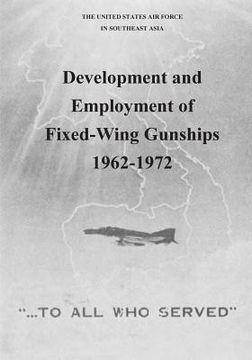Synopsis "Development and Employment of Fixed-Wing Gunships 1962-1972 (in English)"
One of the more striking aspects of the war in Southeast Asia was the adaptation of existing weapons in the American arsenal to the peculiar needs of an unconventional war. Total air superiority presented to the United Statesgreat opportunities to support ground operations. Very early some in the Air Force saw the need for a system that could saturate the ground with fire for interdicting enemy reinforcements, for supporting ground troops in contact with the enemy, and for defending isolated hamlets and outposts under attack. Such a weapons system had to be able to hit small, often fleetingtargets in difficult terrain, at night, and in bad weather, through thick jungle cover. It had to be flexible and survivable, to linger for a protracted time over targets, and above all it had to possess great firepower. Nothing in the inventory could do all of this, so the Air Force developed the fixed-wing gunship. This volume, written by Lt. Col. Jack S. Ballard during his assignment to the Office of Air Force History, traces the gunship's history from initial conception in the early 1960s through deployment and operations to the end of American combat involvement in early 1973.Gunship theory-flying an airplane in a pylon turn to aim side-mounted guns at a fixed point on the ground-had been known for years. But it tookmen of vision and persistence to mate the theory with modern technology, and then sell the idea to higher authorities. Once the concept had beenaccepted, the resulting family of gunships was designed to meet specific requirements, then modified as requirements changed. The result was one of the most innovative and successful weapons used in the war.As impressive as was the hardware, the author does not ignore the human element. The gunship program had its share of high-level indecision, production snarls, and equipment failure; but these were overcome by sound management and determination. Sometimes tactics were faulty, even dangerous, and had to be adjusted to the realities of combat. Gunship crews enjoyed a relatively wide latitude in methods of attacking individual targets; not infrequently they found themselves acting as airborne commandersdirecting the employment of other strike aircraft. Most of the tactical decisions and a large number of key management decisions were made byofficers of surprisingly junior rank. The gunship story shows that the individual still makes a difference in modern war, no matter what thedependence on technology

